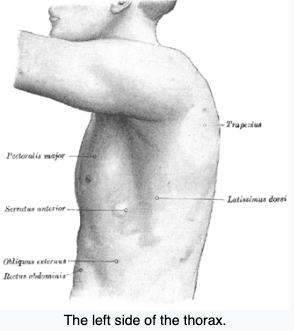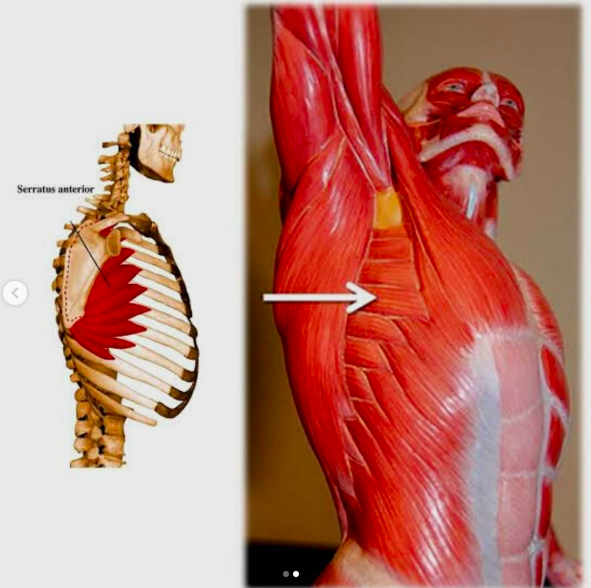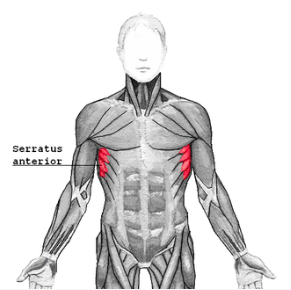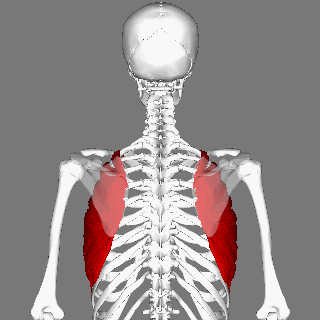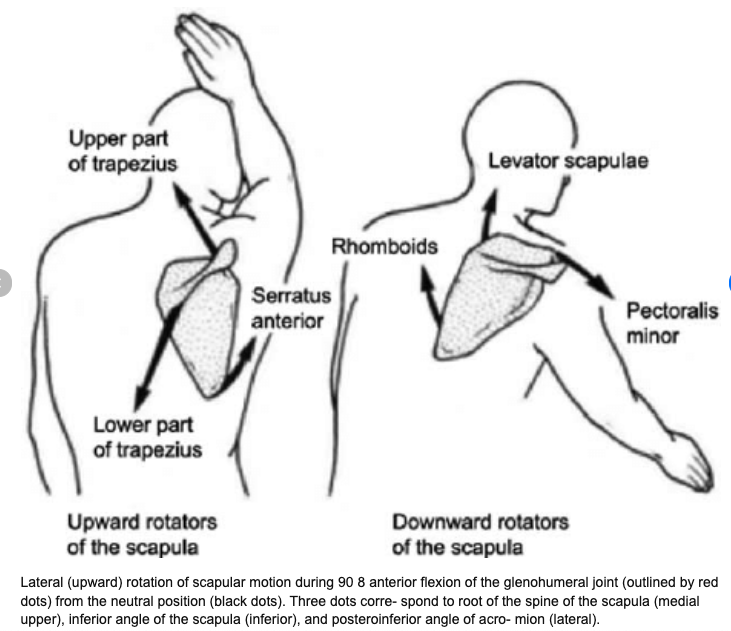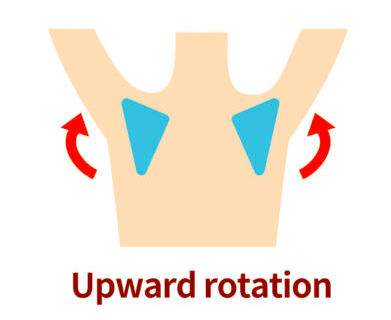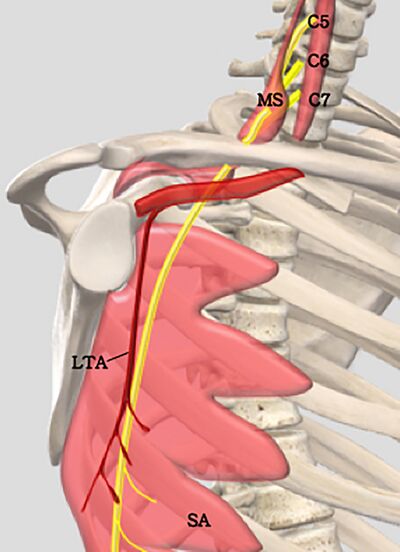Serratus anterior, showing origin from lower ribs (origin from upper ribs obscured by pectoralis major and other superficial muscles)
Long thoracic nerve is a good name, since this nerve is particularly long (it can measure up to 25 cm – 10 inches) and runs across the chest wall or thorax. It originates from the cervical roots 5, 6 and 7 (occasionally 8), forming part of the so-called brachial plexus. After passing under the collarbone, it lies on the surface of the serratus anterior and innervates each of its muscular slips. This superficial position on the side of the chest wall makes the long thoracic nerve particularly vulnerable to injury.
